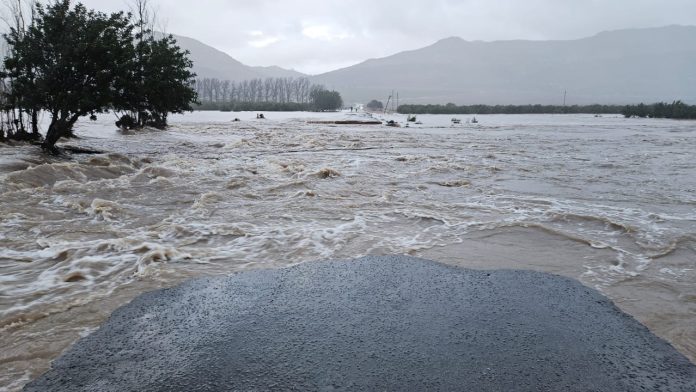The National Disaster Risk Management Centre has officially declared the Western Cape’s deadly stormy weather that has left a trail of destruction a provincial disaster.
The declaration followed just hours after the Western Cape Government had lodged the request.
The new Minister of Cooperative Government and Traditional Affairs, Velenkosini Hlabisa, whose department is responsible for coordinating disaster responses, has also activated the Joint Operation Command Centre, and will visit affected communities on Monday, 15 July.
A series of cold fronts that brought heavy rains, strong winds, snow and icy-cold temperatures wreaked havoc across parts of the province and claimed at least 1 life.
In Cape Town alone, about 100 thousand people and 33 thousand homes were affected by the adverse weather conditions.
READ: Nearly 100 000 people affected by Cape Storms, relief efforts underway
But it may take some time to access funds following the declaration of a disaster. Damage assessments are expected to also take some time.
Premier Alan Winde says additional resources are desperately needed to sustain disaster management operations. He says they are working flat out to complete damage assessments, and he has thanked all stakeholders for everything they do in the service of citizens, particularly the most vulnerable.
Meanwhile, authorities remain on high alert this weekend as cold and wet weather persist.
Two further cold fronts are making landfall between Saturday and Sunday.
The South African Weather Service (SAWS) confirmed a Level 6 warning for disruptive rain in Drakenstein, Stellenbosch and Witzenberg for Saturday and Sunday.
According to the predictions, between 60 to 100mm of rain is expected in the mountainous areas.
The MEC of Local Government Anton Bredell says dams and rivers are full, and catchments are saturated, so any additional rainfall could lead to flooding, mudslides, and rock falls.
We repeat our call to the public to stay safe, avoid unnecessary travel and keep informed through reputable news outlets.
Citrusdal is currently cut off from all access routes, and authorities are attending to this situation. Provincial traffic services are allocating additional resources to provide support.
The Department of Water and Sanitation reported that dam and river levels continue to rise:
- The Breede River at Swellendam is currently flowing at more than 1000m³ per second, which is at a level where the river could start to breach its banks. Larger volumes of water are expected to come down the river in the coming days.
- The Clanwilliam Dam in the Olifants River is currently at 107%, and the controlled release of 1100m³ per second is being implemented. Downstream communities need to take note and exercise caution in the coming days.
- In Laingsburg, the Floriskraal Dam is at 118%, and communities in the immediate downstream vicinity have been alerted of the risk of flooding.
- The Berg River Dam is currently at 103%, and a flow volume of 396m³ was measured at Paarl in the Berg River this morning.
- The Theewaterskloof Dam is currently 90% full.
- Voëlvlei Dam is at 79% capacity.
MEC Bredell thanked all stakeholders and officials who have been working tirelessly this past week to help people in need. “Our focus will remain on keeping people safe until the severe weather has passed.”


